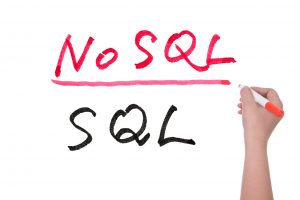A clinical data analyst develops and manages databases for healthcare organizations, generally in a clinical setting or in relation to clinical trials. The No. 1 responsibility for most people in this position is to ensure that data is accurate and reliable.
The duties of a clinical data analyst don’t end there. In fact, many organizations employ an entire clinical data management (CDM) team to ensure that the information collected through clinical trials is sound, relevant, and mistake-free.
Clinical Data Analyst Job Outlook
Where does the clinical data analyst fit in with a CDM team? Here are just a few of the specific duties expected of a clinical data analyst:
- Oversight of externally and internally sourced data management
- Development of clinical data testing systems, including design, documentation, implementation, and reporting
- Working closely with the research team to ensure accurate collecting and recording of data
- Implementation of study-specific procedures to ensure compliance with regulations and internal best practices
- Software development, where applicable
- Training of fellow employees in the use of equipment and software
- Updating and reporting relevant results to stakeholders.
Clinical data analysts might be equated with operations research analysts who are involved in the healthcare industry. While the U.S. Bureau of Labor Statistics estimates that all operations research analysis jobs will grow by 30% through 2024, similar positions in the healthcare and research and development fields are expected to grow even faster.
Job Growth Percentages for a Clinical Data Analyst
Here’s a breakdown of BLS estimates for clinical data analyst job growth percentages through 2024, distinguished by specific sectors of the healthcare and scientific research field:
- Direct health and medical insurance carriers – 52.5% growth
- R&D in physical, engineering, life sciences – 28.3% growth
- R&D in social sciences, humanities – 7.1% growth
- Ambulatory healthcare services – 63.7% growth
- Physician offices – 47% growth
- Outpatient care centers – 82.1% growth
- Hospitals – 28% growth
- Specialty practices – 55.1% growth.
Data Analysts Salaries
One reason clinical data analyst jobs are expected to become more prevalent is the expanded use of digital health records in the United States. The passage of the 2009 American Recovery and Reinvestment Act and subsequent legislation mandated the use of electronic health records, which has created a massive library of new digital data – and the need for analysts with the expertise required to ensure data accuracy and reliability.
According to the BLS, the median annual salary for operations research analysts in 2016 was $79,200. The median salary in 2016 for those who worked in mathematical science operations was $81,750.
Also according to the BLS, the lowest-paid 10% of workers in this field made less than $43,400, while the highest-paid 10% of workers in similar positions earned more than $132,660.
When listing available job positions, hiring agents might use a variety of titles similar to a clinical data analyst, including health data analyst, clinical data manager, clinical research data analyst, clinical informatics analyst, SQL Data Analyst, medical data analyst, clinical data specialist, or medical research data analyst, among others.
Analysts with experience in IT, engineering, management, healthcare administration, statistics, and others might consider a move into the clinical data analytics field. Other viable candidates include nurses and other healthcare professionals who seek to maintain a role in the industry but are looking for a career change.
*National long-term projections may not reflect local and/or short-term economic or job conditions, and do not guarantee actual job growth. Information provided is not intended to represent a complete list of hiring companies or job titles, and program options do not guarantee career or salary outcomes. Students should conduct independent research for specific employment information.




